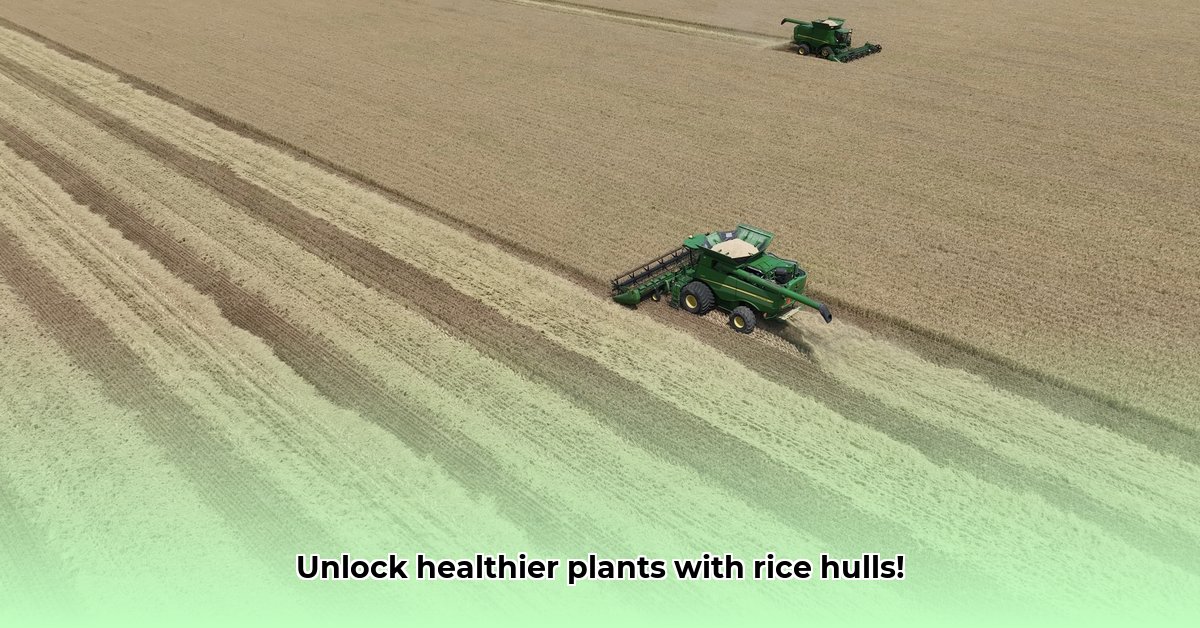
Rice Hulls: A Sustainable Soil Amendment for Thriving Plants
Ready to improve your soil health and boost plant growth? Rice hulls, readily available at Tractor Supply and other agricultural suppliers, offer a surprisingly effective and sustainable solution. This comprehensive guide will explore the benefits, compare them to other soil amendments, and provide a practical, step-by-step guide to using rice hulls effectively. For more information on Tractor Supply, check out their gift cards.
Understanding the Benefits of Rice Hulls
Rice hulls are the tough outer shells of rice grains. After milling, these byproducts are often discarded, but their value as a soil amendment is increasingly recognized. Their lightweight, porous nature leads to significant improvements in soil structure. This results in enhanced aeration (allowing better air circulation for roots), improved drainage (preventing waterlogged conditions), and increased water retention (keeping plants hydrated without overwatering). These factors contribute to healthier root systems and more vigorous plant growth. Furthermore, rice hulls have shown promise in suppressing weed growth, especially in containers or raised beds. Aren't you curious to see how this seemingly simple addition can drastically change your garden?
Rice Hulls vs. Perlite and Vermiculite: A Comparative Analysis
Perlite and vermiculite are popular soil amendments known for their aeration and drainage properties. How do rice hulls compare? While perlite and vermiculite offer immediate improvements in drainage and aeration, rice hulls provide a more sustainable, long-term solution. They gradually improve soil structure, adding organic matter over time. Cost is another key factor; rice hulls frequently represent a more budget-friendly option. However, the data comparing long-term effects across different amendments remains limited, highlighting the need for further research. The parboiled rice hulls commonly found at Tractor Supply are also significantly less dusty than other alternatives, making them easier to handle.
The Environmental Impact of Rice Hulls: Sustainability in Action
Using rice hulls diverts agricultural waste from landfills, reducing waste and associated environmental impacts. While comprehensive lifecycle assessments are still needed, initial studies suggest minimal negative environmental effects. The potential for rice hulls to enhance carbon sequestration in soil—essentially locking away carbon dioxide—is a particularly promising area of ongoing research. This contributes to a healthier planet while improving soil health; isn't that a win-win?
A Step-by-Step Guide to Using Rice Hulls
Ready to get started? Follow these simple steps for successful rice hull application:
- Acquisition: Purchase rice hulls from Tractor Supply or a similar reputable supplier.
- Soil Preparation: Till or loosen your soil to ensure thorough mixing with the rice hulls.
- Mixing: Incorporate rice hulls into your soil at a rate of 20-30% by volume. Adjust this ratio based on your specific soil type and plants. Thorough mixing is crucial for even distribution.
- Planting: Plant your seeds or seedlings as you normally would.
- Monitoring: Observe your plants closely and adjust watering or fertilization as needed. Remember, improved drainage might mean less frequent watering.
Troubleshooting Common Challenges
While rice hulls offer numerous benefits, potential challenges exist:
- Inconsistent Quality: Sourcing from reliable suppliers like Tractor Supply minimizes this risk.
- Scalability: For large-scale farming, innovative solutions like pelletizing are being explored to streamline application.
- Pest/Disease Management: Standard pest and disease control practices remain necessary. Rice hulls alone don't eliminate these concerns.
Case Study: [Insert Case Study Here if Available - Include specific details of successful rice hull application, location, plant type, and results. Cite source if applicable].
Conclusion: Unlocking the Potential of Rice Hulls
Rice hulls represent a valuable and largely untapped resource for improving soil health and promoting sustainable agriculture. While more research is needed to fully understand their long-term effects, their immediate benefits, affordability, and environmental friendliness make them a compelling alternative to other soil amendments. Remember though, consistent monitoring and adaptation are key to achieving optimal results with any soil amendment. By understanding the benefits, potential challenges, and proper application techniques, you can unlock the potential of rice hulls for healthier, more vibrant plants.